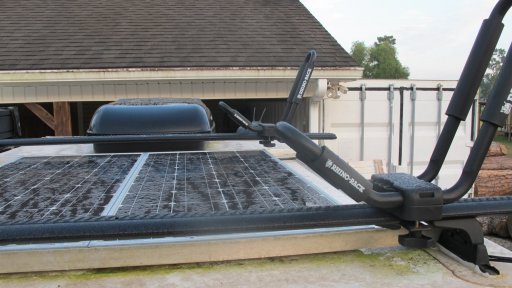Not to throw dirt on your AGM game, but it sounds like you are needing more power and charging than you are getting from your current set up. It also sounds like you may have multiple areas you want power for. (Rig and trailer).
You are already using solar, have you looked at/considered LiFePO4 batteries? Yes they are more expensive but they are also so much more power. They discharge over 90% of the stored power vs the less than 50% of other chemistries. They cycle so many more times, reportedly lasting upto 10 years and beyond. I’ve never had automotive batts last longer than 5 years and since I run two in my diesel truck, at $200 a battery that adds up ($800+over 10 years- if I get 5 years out of a pair). So price is relative when looked at over time. I just built a 12V 200AH LiFePO4 pack for about $350 buying the cells and bms separately. I put them into one of the battery boxes with the lids that give me a 2x12v receptacles as well as a battery power indicator (granted not very useful for LiFePO4 as they give you a full 12V+ all the way through their discharge- other chemistries don’t do that either)
Commercial LiFePO4 offerings are pricey, but they package and market their offerings nicely and the average consumer doesn’t have to do much beyond minimal battery maintenance.
Consider this- You are building YOUR rig to suit Your needs. You are outfitting your gear based on YOUR budget and perception of what you need/want. In the process you are “going to school” on the gear, your vehicle, etc.It’s really just a matter of time before you conclude you want to buy or build a solar power station/generator type piece of kit.
You can spend the hard earned cash to have an awesome commercial product, or you can build it yourself and probably have twice or three times the capability for 1/3 to 1/2 the cost. You can plan and scale your solar generator to be modular and build it over time. That is what I’m doing. I started with the one LiFePO4 bank in a simple battery box, with 12v and USB outlets to allow me to use it. Then I added a second box that contains an inverter, solar charge controller and associated fuse panel and other input/outputs like 12v, USB, XT60, battery Bluetooth monitor, etc.
Now I can more easily move/store the boxes separately or plug them into each other for a more robust generator. I can add more batteries later to run in series or parallel to my initial bank and adjust my solar input accordingly.
In the process I am learning about Solar panels, battery chemistries, generator components and abilities, etc. I have even learned I can deploy my solar panels on my rig at home and back feed my house through a standard wall outlet and slow my house meter and save money on my monthly power bill by using a grid tie inverter. (Perfectly safe and legal as it does NOT require any kind of permit or special wiring installation, just plug it into any house outlet and let your solar panels work for you when you are not camping).
From here it’s a skip and a jump to augmenting my grid usage or setting up my house to be off grid or less dependent on the grid. So my interest in the Solar power and associated components goes beyond just running some lights, a portable fridge/cooler or charging phones and laptops while camping.
Rant Over, I hope the “Solar Bug” bites you too! Happy trails...





